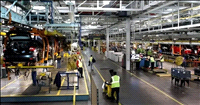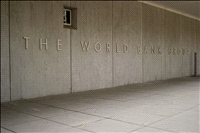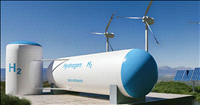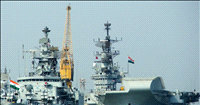Not hollow like his cylindrical invention
24 Dec 2001
Back in the eighties, when he was much younger and trying to establish himself as a fluid coupling supplier, he sent a one page telegram to the then prime minister, Indira Gandhi, explaining his capability in supplying fluid couplings to Neyveli Lignite Corporations (NLC) conveyors.
The telegram, coupled with his capability, got him a trial order for two numbers, which ran successfully. One more communication to New Delhi ensured that he got half of NLCs final order.
The eldest of three siblings (one brother and two sisters), and born to a government employee, Gopalakrishnan is a mechanical engineering graduate from PSG College of Technology, Coimbatore. He also did a post-graduate diploma in marketing from the University of Madras.
Immediately after his education, he joined PSG Industrial Institute, Coimbatore, and was involved in a project that indegenised the fluid coupling, which was being imported. Six months later he joined Greaves Cotton as a sales engineer.
Climbing the corporate ladder fast, he became a divisional manager drawing Rs 4,500 every month, then a princely salary. But he quit Greaves Cotton when he was transferred to Guwahati though he was offered two times the salary he was drawing. Turning down the KSB Pumps job offer with a one-year stint in Germany, Gopalakrishnan decided to return to his native town Chennai.
He approached TIIC and got Rs 10 lakh loan to manufacture fluid couplings (a product used in motor drives). His innovation in the coupling resulted in power saving and reduction in yarn loss and made him popular across the textile industry.
"When the fortunes of the textile industry reversed, I started selling to other industries like sugar mills, steel plants, power projects, Indian Space and Research Organisation, coal mines and others," he says.
In the early nineties, he diversified into solar panels with an innovative product. Instead of all glass panels, he came out with all fibre glass transparent glazing going against the IREDA specification. Here, he faced problems and instead looked at the market where the buyers were more inclined towards quality than subsidy and depreciation.
In 1996, when industrial recession began and thus arose a dearth for new projects, he decided to look out for other areas. I thought of a mass item, and out of curiosity checked the auto population and found that the majority were running on diesel." That was the time when leaded and unleaded petrol and catalytic convertors for cars came in. Reading several books, he found that microwave heating of diesel alters its viscosity and improves kinetics of combustion.
"Even in ONGC, this technology is used to pump tar-like-oil from shale," he says. The only stumbling block was that the technology had so far been applied in high voltage devices only. The challenge was to attempt it in a low-voltage device like a vehicle battery.
And soon he succeeded. The first Hydro Drive was tested in his 1985 Maruti Omni, which was in a reboring stage, and to his surprise he got zero emission and mileage improvement. "I wrote to Maruti Udyog about the results and got another Omni under a special quota for testing the product on a new vehicle. Here, too, the emissions were zero and the mileage improved in actual road driving conditions to 18 kms/litre from 13 kms," he says. Then started the official indifference towards him and his invention. But at the retail-level car dealers (all makes) fitted Hydro Drive in the cars. They also wrote highly about the product to the automobile manufacturers who reprimanded and warned users about non-applicability of warranties if outside gadgets were fitted. With the local industry showing no signs of recognition, Gopalakrishnan decided to go global with his invention. But luck was not on his side then. Though his paper was accepted at the Society of Automotive Engineers, after being vetted by Ford Motor Companys engine expert and others, it was withdrawn in the last minute, citing the US sanctions after Indias Pokharan II.
"My supplying fluid couplings to PSLV rockets got me blacklisted," he says. At this crucial juncture, R M Vasagam, former vice-chancellor, Anna University, Chennai, also a PSG College alumni, enabled Gopalakrishnan to publish his paper in November 1998.






























